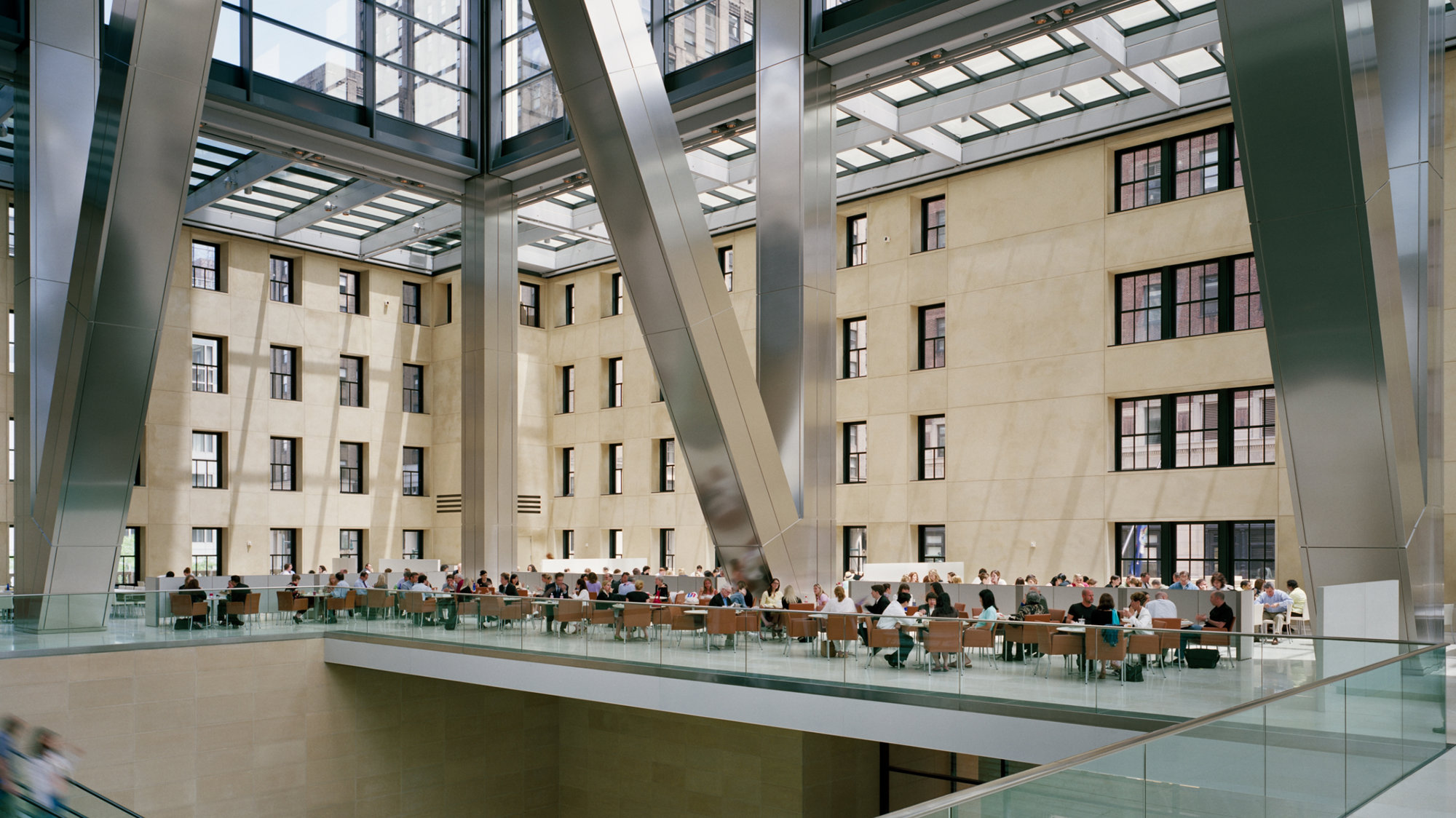Foster and Partners striking new addition to the New York skyline - the 46-storey headquarters tower for the Hearst Corporation - was officially opened today. Its crystalline form rises dramatically above Joseph Urbans existing six-storey Art Deco building, realising founder William Randolph Hearsts original vision and reinforcing the vibrant media hub at Columbus Circle. Hearst Tower is the first occupied commercial building in New York City to achieve a LEED Gold Rating (under the US Green Buildings Councils Leadership in Energy and Environmental Design Program). It will enable one of Americas largest publishing companies to consolidate 2,000 of its New York City employees in one location.
Norman Foster said:
The completion of the Hearst Tower is a defining moment for New York. It represents great optimism and a sign of more good things to come after the trauma of the citys recent history. I am grateful to have been given the opportunity to work on the realisation of this dream originally envisioned in 1929. It is a mark of a determined client and a great city that this tower literally sparkles on the New York skyline today.
The Hearst Corporations drive to create an improved workplace is articulated by the buildings light-filled, environmentally progressive status. Designed to consume significantly less energy than a conventional New York office building, Hearst Tower is utilising outside air ventilation for up to 75% of the year and is a model of sustainable office design.
Unlike a traditionally framed structure, the tower has a triangulated form. With its corners peeled back, the effect emphasises the building's vertical proportions and creates a distinctive facetted silhouette on the skyline that reveals unique views across the Manhattan grid. Requiring 20% less steel - 85% of which is recycled - it is also more efficient than a conventional tower.
Establishing a creative dialogue between old and new, the tower is linked to the existing building by a transparent skirt of glass which floods the spaces below with natural light, giving the impression of a glass tower floating weightlessly above. The main spatial event is a vast internal plaza an urban room - that occupies the entire shell of the historic base. This dramatic space, surrounded by the original windowed masonry walls, creates a bold entrance that echoes the tone and texture of the Art Deco exterior to evoke a sense of the civic realm. Providing access to all parts of the building, it is the social heart of the Hearst community, incorporating' Café 57' ,the Joseph Urban Theatre and exhibition spaces. For designated events it also becomes a public space.
A series of diagonal escalators set between a cascading fall of chilled water connect the street level to the grand internal plaza, with elevated mezzanine levels used for meetings, exhibitions and special functions. The two-storey high Icefall - a collaboration with glass specialist Jamie Carpenter and Jim Garland of Fluidity - uses collected rainwater to cool the atrium in summer and humidify in wintertime. 'Riverlines a 40 by 70 feet installation - by artist Richard Long, is a rich, contemplative mural set against the elegant grey stone of the elevator core. Like a cave painting for the 21st Century, it is created from the mud of the Avon and Hudson rivers and celebrates the metaphor of the river as a symbol of journey, movement and life.









